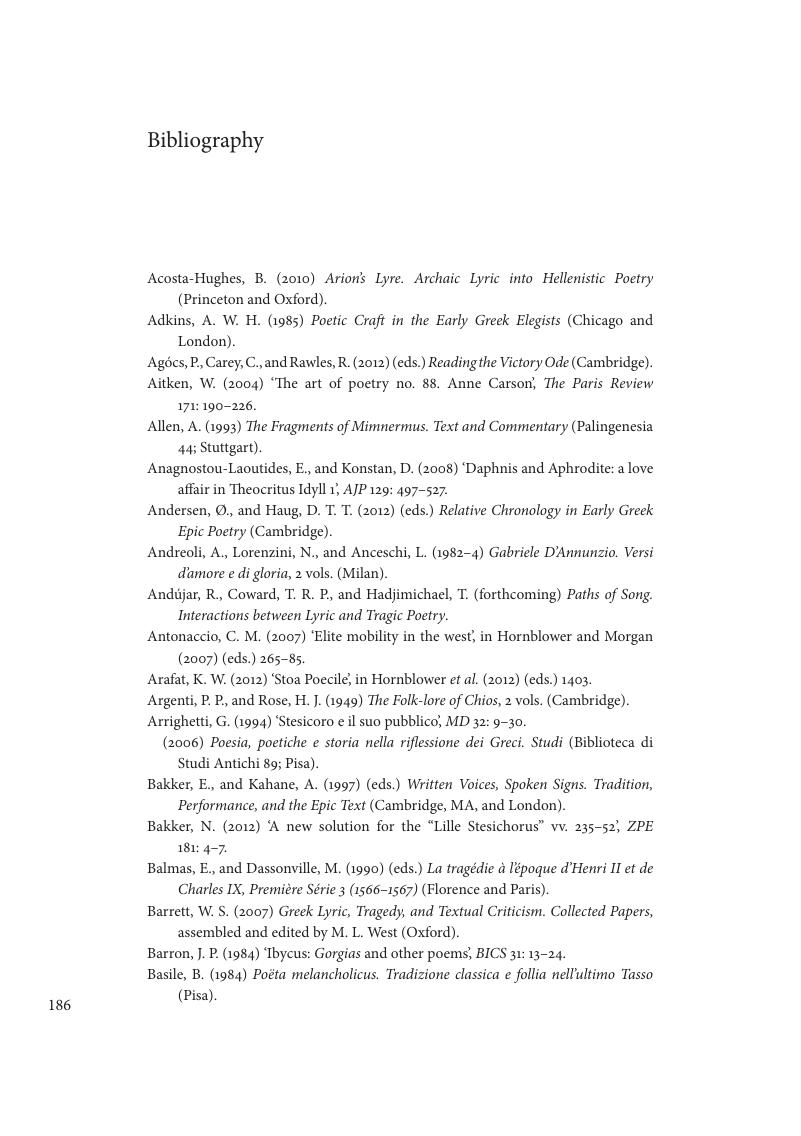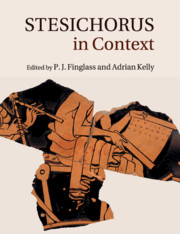Book contents
- Stesichorus in Context
- Stesichorus in Context
- Copyright page
- Contents
- Contributors
- Preface
- Glossary
- 1 The state of Stesichorean studies
- Part I Stesichorus and epic
- Part II Stesichorean poetics
- Part III Reception and influence
- Bibliography
- Index of subjects
- Index of Greek
- Index of passages discussed
- References
Bibliography
Published online by Cambridge University Press: 05 June 2015
- Stesichorus in Context
- Stesichorus in Context
- Copyright page
- Contents
- Contributors
- Preface
- Glossary
- 1 The state of Stesichorean studies
- Part I Stesichorus and epic
- Part II Stesichorean poetics
- Part III Reception and influence
- Bibliography
- Index of subjects
- Index of Greek
- Index of passages discussed
- References
Summary

- Type
- Chapter
- Information
- Stesichorus in Context , pp. 186 - 204Publisher: Cambridge University PressPrint publication year: 2015



